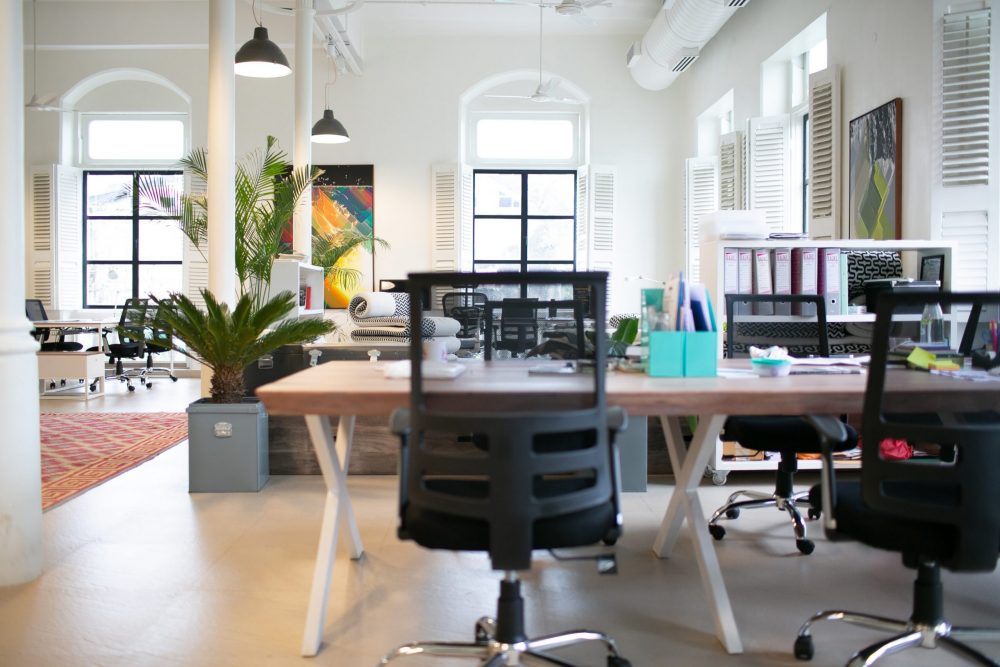Allwork.Space reports that 78% of employees say that access to natural light and views improves their overall happiness and wellbeing.

This article was originally published by Allwork.Space.
A survey by an HR advisory firm found that employees crave something fundamental and essential to human needs: sunlight.
In a research poll of 1,614 North American employees, the survey found that access to natural light and views of the outdoors are the number one attribute of the workplace environment – outranking perks like fitness centers and on-site childcare.
Employees said that access to natural light and views improves their overall happiness and wellbeing (78%), work satisfaction (73%), work performance (70%) and organizational commitment (54%).
Over a third of employees feel that they don’t get enough natural light in their workspace.
47% of employees admit they feel tired or very tired from the absence of natural light or a window at their office, and 43% report feeling gloomy by the lack of light.
The survey’s findings support a larger trend of the growing importance of employee wellbeing. When employees are fulfilled in all aspects of their wellbeing, this leads to increased employee engagement and individual performance.
Sunlight plays a major role in our metabolism, internal clocks, and almost all other cellular processes.
Many workers are familiar with the feeling of missing natural light, especially if they work in buildings with no windows, poor natural lighting, or blinds or curtains that diminish the sun’s rays.
Missing out on natural light impacts people’s ability to work, and there’s no replacing real natural light; the qualities of sunlight cannot be substituted with synthetic lighting.
Research proves just how valuable sunlight is for workers
Research by Cornell University Professor Dr. Alan Hedge reinforces the connection of natural light and employee wellbeing.
Dr. Hedge’s research study found that optimization of natural light in an office significantly improves health and wellness among workers.
In fact, workers in daylight office environments reported a 51% drop in eyestrain, a 63% drop in headaches and a 56% reduction in drowsiness.
“There is increasing evidence that exposure to light, during the day – particularly in the morning — is beneficial to your health via its effects on mood, alertness and metabolism. Workers are a group at risk because they are typically indoors often without access to natural or even artificial bright light for the entire day,” said Phyllis Zee, MD, PhD, a Northwestern Medicine neurologist and sleep specialist.
When exposed to sunlight, the skin absorbs vitamin D – a critical nutrient that prevents bone loss and reduces the risk of heart disease, weight gain, and various cancers.
Since mental health and sleep often go hand in hand, it’s not surprising that natural light affects both. A small 2014 study of office workers revealed that the more natural light exposure they received, the better sleep they experienced.
According to a 2011 study at the University of Oregon, the quality of the view from a person’s desk and their exposure to natural light are interconnected with the amount of sick time they take. In the study, those who had nice views of the outside and received a decent amount of sunlight took 6.5% less sick leave than others.
All in all, natural light/vitamin D has a long list of benefits that should have more value placed upon them.
Natural light is good for wellbeing, and blue light is bad
Over half of employees say that prolonged screen use leads to eyestrain or headaches at work. 73% agree that the longer they use their technology devices, the more they desire a visual break such as taking a walk or glancing at the view outside.
An eMarketer Mobile Research study reports that American adults over the age of 18 spend about four hours on their mobile devices every day, but what about those who work from a computer screen as well?
Workers spend on average 5 hours and 42 minutes at their desk each day. Having access to natural light can have a significant impact on employees’ work performance, wellbeing and engagement.
For desk workers and remote employees, staring at a computer screen for the majority of the day is unavoidable.
Unfortunately, there’s something called “blue light” emitted from electronics that is linked to health problems like blurry vision, eyestrain, dry eye, macular degeneration, and cataracts, according to WebMD. Some people even have sleep issues when exposed to too much blue light.
Experts think digital eye strain, or computer vision syndrome, affects about 50% of computer users.
When possible, workers should take breaks from staring at their screens and sitting inside.
The American Optometric Association recommends the 20-20-20 rule: Every 20 minutes look in excess of 20 feet for at least 20 seconds.
To ensure you’re taking care of your mental and physical wellbeing, take frequent breaks to refocus your eyes on something that isn’t a screen, and go outside and absorb some sunlight.

